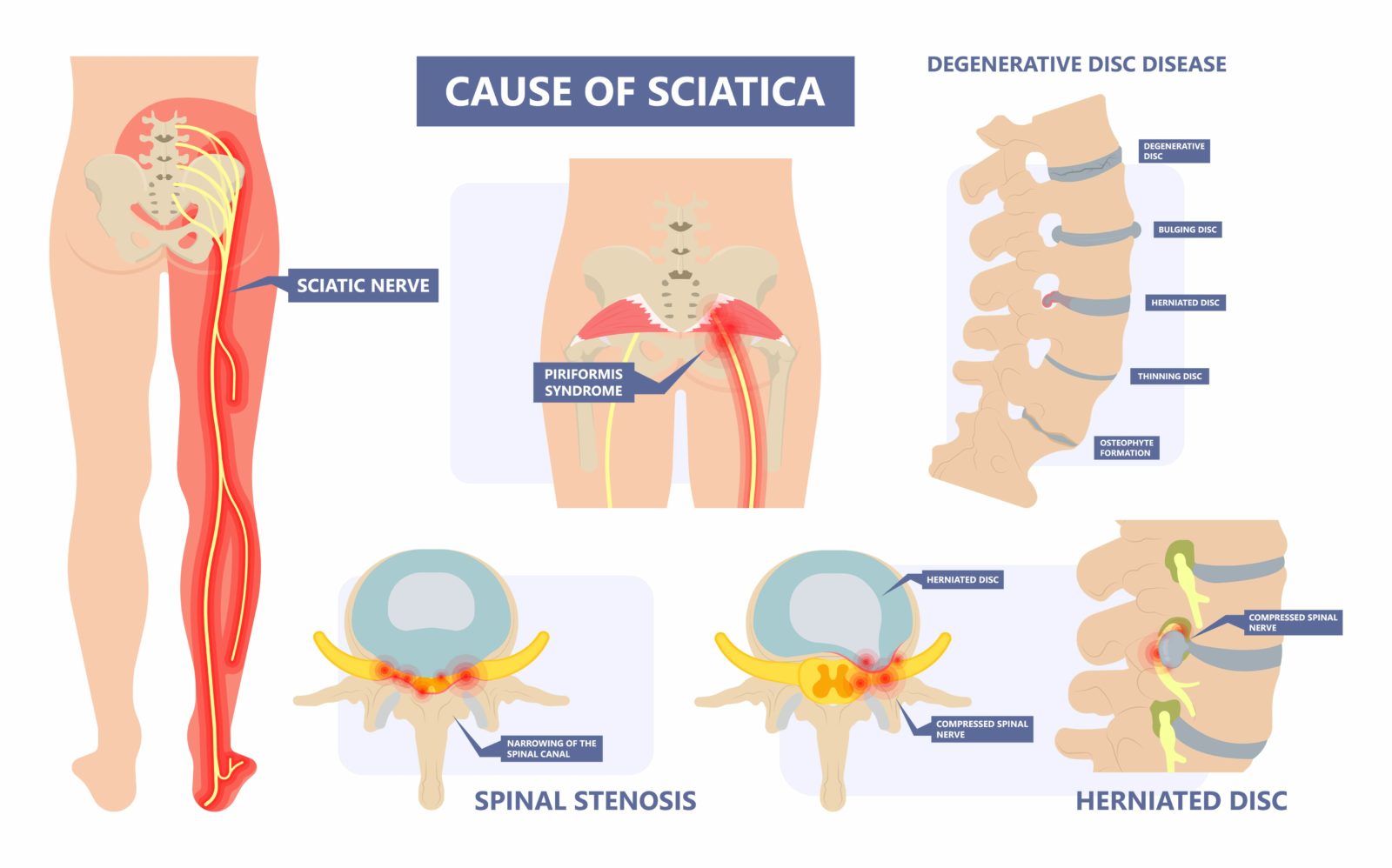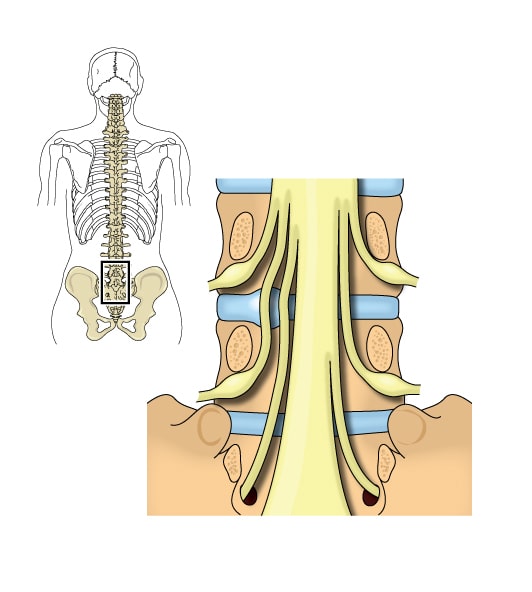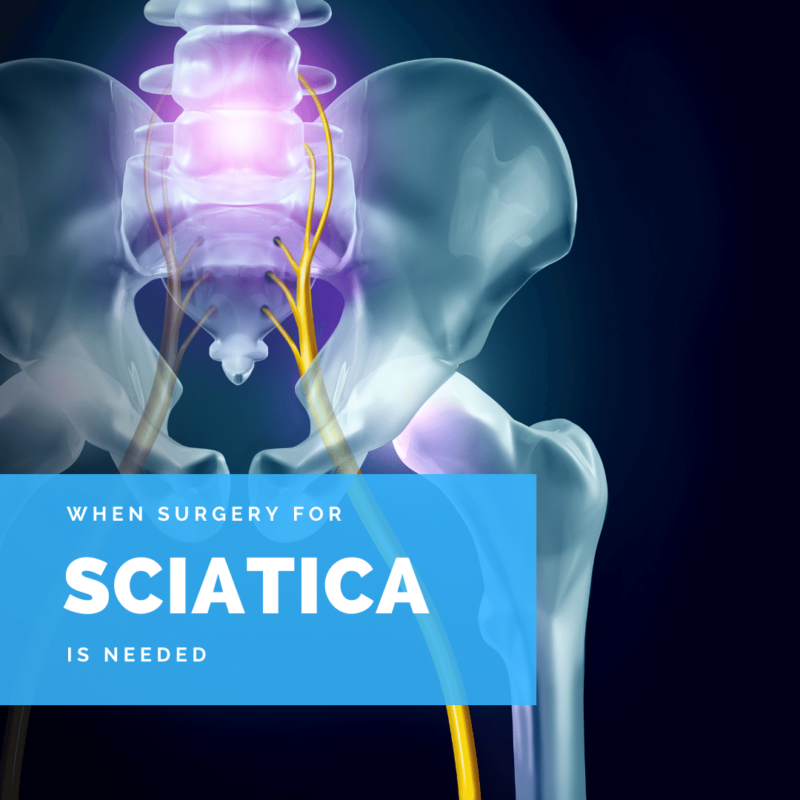The sciatic nerve starts in the spinal cord and travels down each leg, making it the longest nerve in the human body. Unfortunately when this nerve or the area around it becomes damaged, it can cause pain that flows from your back, through the buttock, and down into the lower limbs. In some cases, you may also experience numbness, weakness, or a pin and needles feeling in your legs and feet. Rare cases of incontinence have also been reported. Collectively, these sensations are known as sciatica.

Sciatica itself is not a condition, rather it is a symptom of various other conditions that can affect the sciatic nerve. It is estimated that around 40% of people will experience sciatic at some point during their lifetime. People who are older, have careers that strain the back, have diabetes, or who smoke are at an increased risk for certain conditions that cause sciatica. Some possible conditions that have been associated with causing sciatica include:
- Herniated disc
- Spinal stenosis
- Spondylolisthesis
- Piriformis syndrome
These aforementioned conditions can generally be managed with non-surgical sciatica treatments. This usually consists of physical therapy, medications, therapeutic injections, and alternative therapies. Acute cases usually dissipate within 4-6 weeks, while chronic cases may take longer.
In some cases, the condition responsible for causing sciatica must be treated with spinal surgery. This is usually the case if non-surgical treatment has been unsuccessful in relieving pain, numbness, or weakness. There are also cases where sciatica surgery may be performed immediately without trying non-surgical treatments. Cases that require surgery as a first option include:

- Cauda equina syndrome: is considered a medical emergency that requires immediate treatment. Cauda equina syndrome occurs when the nerve roots of the cauda equina are compressed. When this happens, it can result in incontinence, as well as the loss of motor and sensory function in the lower body.
- Tumors: cysts, abscesses, or multiple fractures in the lumbar spine are another possible reason where surgery may need to be performed sooner rather than later.
- Infection: infections affecting the pelvic region that do not respond to medication can cause the need for immediate surgery.
- Bilateral sciatica: traditionally, sciatica only affects one side of the body. However, in cases where it affects both legs, this can indicate the herniation of multiple discs, a severe herniated disc, or central spinal stenosis.
When surgery for sciatica is performed, the main goal is to relieve pressure on the sciatic nerve in order to reduce pain, numbness, and weakness in the legs and feed. Depending on the surgical procedure performed, pain in the back may or may not improve after sciatica surgery. There are two surgical techniques used for sciatica: microdiscectomy & lumbar decompression.
A microdiscectomy is commonly used in cases where a lumbar disc has herniated. During a microdiscectomy, a small piece of the affected disc is removed from under the nerve root in order to alleviate pressure on the nerve. Around 86% of people have less back pain after having a microdiscectomy.
There are also different approaches to lumbar decompression surgery that may be performed. These include laminectomy, foraminotomy, and/or facetectomy. A laminectomy is usually performed to relieve sciatica that is caused by spinal stenosis and is characterized by removing part of the lamina to create room for the spinal nerves. A foraminotomy provides more room for the nerves by removing the bony overgrowth at the end of the spinal column. Finally, a facetectomy trims or cuts degenerated facet discs in order to relieve compression on the nerves. In some cases, a combination of all three techniques are used to obtain the desired results.










